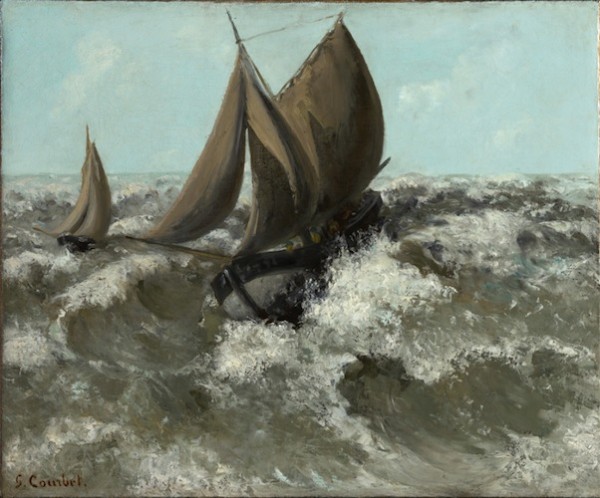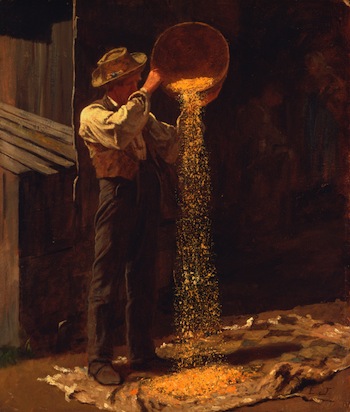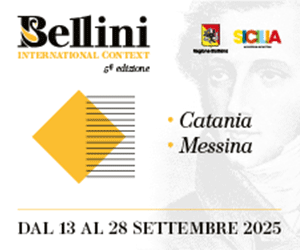Visual Arts Review: Courbet’s Mighty Power — His Art and Its Influence On Other Artists
A wide swath of Belgian and American artists became interested in Courbet’s attention to the humble subject and his distinctive handling of paint. Mapping Realism examines how and whom.
Courbet: Mapping Realism at Boston College, McMullen Museum of Art, Boston College, Chestnut Hill, MA, through December 8.
By Franklin Einspruch
Courbet: Mapping Realism, currently up at the McMullen Museum at Boston College, had to find some way to blossom in the still-looming shadow of a triumphant exhibition of Gustave Courbet at the Metropolitan Museum of Art in 2008 that prompted Roberta Smith of The New York Times to write that no artist before Picasso left so much of himself on canvas. The McMullen has no Courbet holdings, but it does have some works by late 19th century Americans who took cues from the capital-R Realists in France, including famous names like John LaFarge and some lesser known ones such as Elihu Vedder. So it is they who fill out the Courbet loans, most of which hail from the Royal Museums of Fine Arts of Belgium. None of these paintings are renowned, though this is Courbet, after all, and worth seeing even when the master’s brush was not at its sharpest.
Why Belgium? Largely because of BC art history professor Jeffrey Howe and his association with the Royal Museums which dates to the early 2000s, which resulted in a 2004 exhibition at the McMullen of Belgian symbolist Fernand Khnopff. Also, patrons and museums in Belgium were receptive to Courbet’s work even when the French were hostile. According to Howe’s essay in the exhibition catalogue, Courbet wrote an 1866 letter to the Belgian merchant, art dealer, and critic Arthur Stevens – brother of the painters Alfred and Joseph, both of whom have work in this exhibition – in which he expressed an enormous kinship and gratitude to the nation. “I consider Belgium my country,” he declared. “I have been going there for twenty-six years and have received all kinds of ovations and tokens of friendship.” Despite the unreliability of the famously egotistical narrator, this was no exaggeration. He circulated among royalty and was made an honorary member of the Société libre des Beaux-Arts de Bruxelles, an artist-run “free society” sympathetic to Courbetist Realism. In another letter to his father in 1861, Courbet wrote that “Belgium and its artists have avenged the stupidities of the French government in my regard.” He was not referring to his hapless involvement in politics – that was not to come for another decade – but to his repeated embarrassments at the hands of the French salons.
Why mapping? I attribute it to an academic tendency in McMullen Museum productions that results in stilted metaphors. For their Klee exhibition last year, that word was “nature,” which barely survived as a theme by the time all the contributors had weighed in. Suffice it to say that a wide swath of Belgian and American artists became interested in Courbet’s attention to the humble subject and his distinctive handling of paint. Mapping Realism examines how and whom.
In Belgium, this included Louis Dubois, represented here with several fine canvases. Dubois was a founding member of the Société libre and called upon Courbet while the latter was set up in his studio in Besançon. Dubois could out-Courbet Courbet when he set his sights on the landscape. The Heights of Beez near Namur (1861) depicts cut cliffs being overtaken by trees as if by a shadowy doom, while broken clouds in the sky separate into a cheery band of white and a stormy band of gray. The extent to which he could load the landscape with angst is on full display in The Dead Deer – Solitude (1863), in which said carcass lies on its side, felled my an unknown cause – it’s not pierced, or even bleeding – on a stretch of bare rock. The mountainside view overlooks a subfusc forest under an empty, pale sky. Dubois’ figurative work was clearly something of a struggle for him. The features of the model and the symmetries of the porcelain in Woman with Bouquet (1854-55) are so misaligned as to evoke Picasso, but the paint is so rich – that conch shell! – that one has to forgive and enjoy it. Roulette of 1860 is an example of the Realist interest in the unidealized depiction of life at the time. Here, nine figures, none of which are looking at each other, surround a roulette table upon which banknotes and coins have been played. Their expressions convey, if anything, surety about their imminent loss.

The Sailboat (Seascape), Gustave Courbet, Sterling and Francine Clark Art Institute. Photo: Michael Agee.
The discoveries to be had among the Americans are no less delightful. Elizabeth Boott, a Bostonian who married her teacher Frank Duvenick in Paris, has a striking canvas of autumn leaves arranged in a glass bowl. (It would be a fine thing to see more works by her, but there aren’t many – she died of pneumonia a month shy of 42.) Painters revere Courbet’s use of the palette knife to apply lights and highlights, and Boott Duvenick employed the technique with great dexterity and gusto, knifing bold whites into the drapery. In Eastman Johnson’s Winnowing Grain (c. 1873-79), the grain pouring from a man’s upheld basket shimmers golden in the cross-light. John LaFarge, who also sometimes found the human figure confounding, nevertheless produced an extraordinary landscape in which he took the methods of Realism to a level of explosive abstraction. In Wooded Interior from 1864 the colors of autumn burn in the darkness. It might be unrecognizable as a forest scene if not for small dabs of blue sky in the distance.
Then there are the Courbets themselves. The knifework in The Sailboat (Seascape) (1873) is something to behold, causing spray to rise out of a tumultuous ocean and toss a couple of boats in the scene like playthings. The closer boat is in danger of being thrown off the top edge of the canvas. White water likewise springs into action in The Mill at Longeville (1868), the falls forming the brightest part of a picture of a rough country building under a cerulean sky at afternoon. The planarity of paint application, a natural result of the knife, makes pieces like Jura Landscape (1869) and The Covert of Roe Deer at the Stream of Plaisir-Fontaine (1866) look faintly Cézannian, which testifies to their advanced vision relative to other painting of the time.
This, then, is how to bloom in a shadow – plant wildflowers that invite close inspection. Even without famous Corubets, Mapping Realism presents a forceful case for Courbet’s might, not only in his own right but in his influence upon other artists who merit further perusal.
Tagged: Boston College, Courbet: Mapping Realism, Eastman Johnson, Gustave Courbet, John LaFarge, Louis Dubois


